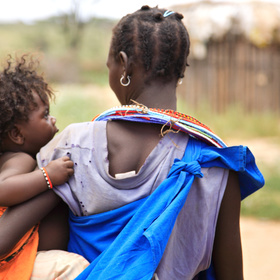
Sustainable Development Goals (SDGs): Text Classification Challenge
Helping Africa
$1 000 USD
Challenge completed ~7 years ago
Natural Language Processing
Classification
413 joined
50 active
Start
Sep 05, 18
Close
Nov 12, 18
Reveal
Nov 13, 18
About
The data has been split into a test and training set.
Notes on the data: The text contains some HTML mark-up. Dealing with this “dirtiness” of the text is part of the challenge. All the text is in English. The training data was manually classified by Devex analysts and subject-matter experts.
Variables in devex_train.csv
- ID: Unique ID of text to be classified
- Type: The type or source of the text. (Contract=Names of contracts, News=Titles of news articles, Organization=Text about an organization, Open Opp=Description of an opportunity)
- Text: text to be classified
- Label_1 through Label_12: These columns are populated starting at Label_1 increasing incrementally until all relevent classifications are populated, to a maximum of 12 Labels. The remaining Labels are left blank.
The 27 possible SDG 3 indicators are (In the dataset, you will use only the indicator's code, e.g. "3.1.1"):
- 3.1.1 - Maternal mortality ratio
- 3.1.2 - Proportion of births attended by skilled health personnel
- 3.2.1 - Under-5 mortality rate
- 3.2.2 - Neonatal mortality rate
- 3.3.1 - Number of new HIV infections per 1 000 uninfected population, by sex, age and key populations
- 3.3.2 - Tuberculosis incidence per 100 000 population
- 3.3.3 - Malaria incidence per 1 000 population
- 3.3.4 - Hepatitis B incidence per 100 000 population
- 3.3.5 - Number of people requiring interventions against neglected tropical diseases
- 3.4.1 - Mortality rate attributed to cardiovascular disease, cancer, diabetes or chronic respiratory disease
- 3.4.2 - Suicide mortality rate
- 3.5.1 - Coverage of treatment interventions (pharmacological, psychosocial and rehabilitation and aftercare services) for substance use disorders
- 3.5.2 - Harmful use of alcohol, defined according to the national context as alcohol per capita consumption (aged 15 years and older) within a calendar year in litres of pure alcohol
- 3.6.1 - Death rate due to road traffic injuries
- 3.7.1 - Proportion of women of reproductive age (aged 15–49 years) who have their need for family planning satisfied with modern methods
- 3.7.2 - Adolescent birth rate (aged 10–14 years; aged 15–19 years) per 1 000 women in that age group
- 3.8.1 - Coverage of essential health services (defined as the average coverage of essential services based on tracer interventions that include reproductive, maternal, newborn and child health, infectious diseases, non-communicable diseases and service capacity and access, among the general and the most disadvantaged population)
- 3.8.2 - Proportion of population with large household expenditures on health as a share of total household expenditure or income
- 3.9.1 - Mortality rate attributed to household and ambient air pollution
- 3.9.2 - Mortality rate attributed to unsafe water, unsafe sanitation and lack of hygiene (exposure to unsafe Water, Sanitation and Hygiene for All (WASH) services)
- 3.9.3 - Mortality rate attributed to unintentional poisoning
- 3.a.1 - Age-standardized prevalence of current tobacco use among persons aged 15 years and older
- 3.b.1 - Proportion of the target population covered by all vaccines included in their national programme
- 3.b.2 - Total net official development assistance to medical research and basic health sector
- 3.b.3 - Proportion of health facilities that have a core set of relevant essential medicines available and affordable on a sustainable basis
- 3.c.1 - Health worker density and distribution
- 3.d.1 - International Health Regulations (IHR) capacity and health emergency preparedness
Join the largest network for
data scientists and AI builders
Status
© Zindi 2025